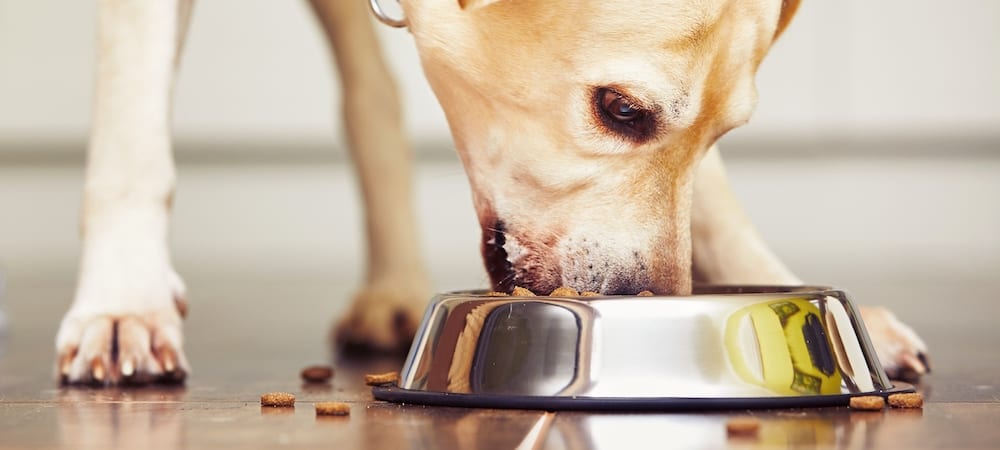Your Low-Fat Dog Food Buying Guide


Peruse any pet store and you’ve probably noticed that there are a zillion different varieties of dog food. One of these types is low-fat. If your pup is experiencing certain health issues, such as pancreatitis or liver disease, your veterinarian might recommend that you switch to a low-fat diet. As always, consult your veterinarian before making changes to your pet’s diet. In the meantime, here’s your guide to low-fat dog food!
What Is Low-Fat Dog Food?
Generally a diet with less than 10% fat or less than 17% of calories from fat is considered to be low-fat. Meanwhile diets with 10-15% fat, or 17-23% of calories from fat are considered to contain a moderate amount of fat. Diets with more than 20% fat are considered high-fat.
Why Choose Low-Fat Dog Food?
One reason veterinarians recommend pet owners feed their dogs low-fat food is pancreatitis. Another common health issue treated with low-fat dog food is liver disease. This is because diets higher in carbohydrates and lower in protein help reduce the high volume of ammonia in the bloodstream.
And, of course, your vet might also suggest you buy a low-fat dog food if your pooch could stand to lose a little bit of weight. Low-fat dog food is less calorically dense — meaning a cup of low-fat food will have fewer calories in it than a cup of regular-fat food. Thus, by eating low-fat food, your pet will lose weight.
While low-fat food might be beneficial for your pup, remember that your dog still needs some fat to thrive. Foods that are too low-fat don’t provide adequate amounts of fat-soluble vitamins. Your dog needs fat for a healthy coat and skin. Too little fat can also leave your dog feeling exhausted and hungry.
Which Low-Fat Food Should You Choose?
While shopping for low-fat food for your dog, take a look at the ingredients. Foods that have simple, easy-to-pronounce ingredients are better for your pup. You also want to make sure that the food is free of anything that your dog is allergic to.
When selecting low-fat food for your dog, it’s important to first consult your veterinarian. They might already have a brand in mind. They also might actually prescribe your pup a diet specific to their health needs. These foods you can’t purchase without a vet’s permission. Here are some of our favorite low-fat dog foods:
| Name | Main Ingredients | Crude Protein | Crude Fat |
| Royal Canin Gastrointestinal | Rice, chicken, wheat | 25% min | 5.5-8.5% |
| Purina EN Gastroenteric | Brewers rice, barley, corn gluten meal, chicken meal | 23% min | 10.5% |
| Hill’s Prescription Diet Digestive Care | Lamb meal, chicken, tuna, Brewer’s rice, vegetables | 23% min | 12% min |
| Eagle Pack Natural Dog Food | Lamb meal, chicken meal, pork meal, oatmeal, ground brown rice | 24% min | 12% min |
| Natural Balance Limited Ingredient Diets | Chicken, chicken meal, sweet potatoes, peas | 24% min | 10% min |
| Fromm Family Weight Management | Turkey liver, chicken meal, turkey broth, oat groats | 25% min | 10% min |
| NutriSource Weight Management | Chicken, chicken meal, brown rice, white rice, barley | 25% min | 9% min |
| Canidae Pure Dog | Grain free, salmon, lamb, chicken, duck, bison, turkey, barley, oatmeal, sweet potato, | 25% min | 14.5% min |
| Merrick Healthy Weight Recipe | Deboned beef, chicken meal, potatoes, peas | 30% min | 8-11% min |
Again, only switch to a low-fat dog food with your veterinarian’s permission. Low-fat foods are formulated to treat specific conditions, such as obesity and pancreatitis, and are not for all dogs.



